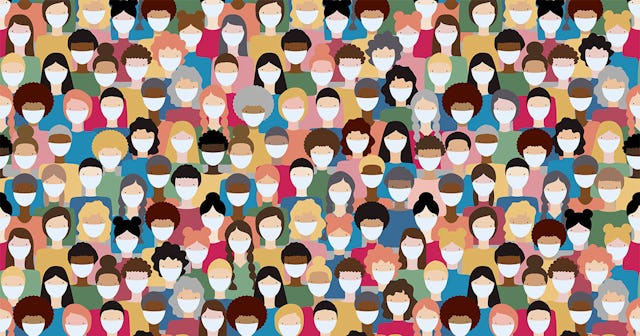Experts Say That Reaching 'Herd Immunity' Not Likely Anymore

Vaccine hesitancy and new variants has experts saying we’ll never reach “herd immunity”
At the beginning of the pandemic, the term “herd immunity” was tossed around constantly. Those on the wrong side of science demanded we reach herd immunity “naturally,” by way of lots and lots of people dying from COVID-19, while everyone else thought we’d reach that goal post though vaccinations. However, as many have been wondering in recent weeks, it seems like herd immunity is actually going evade the U.S.
More than half the adults in the U.S. have received at least one dose of a COVID-19 vaccine, which is awesome, but as The New York Times reported on May 3, 2021, “daily vaccination rates are slipping, and there is widespread consensus among scientists and public health experts that the herd immunity threshold is not attainable — at least not in the foreseeable future, and perhaps not ever.”
“The virus is unlikely to go away,” Rustom Antia, an evolutionary biologist at Emory University told The New York Times. “But we want to do all we can to check that it’s likely to become a mild infection.”
Dr. Fauci often spoke of certain percentage thresholds that the U.S. would need to reach herd immunity, but that kind of language has fallen off in recent weeks. “People were getting confused and thinking you’re never going to get the infections down until you reach this mystical level of herd immunity, whatever that number is,” Fauci told The Times. “That’s why we stopped using herd immunity in the classic sense. I’m saying: Forget that for a second. You vaccinate enough people, the infections are going to go down.”
The main reasons that experts think true herd immunity is now a long-shot is due to variants and vaccine hesitancy.
The quick pace at which this virus mutates and creates new variants, experts estimate that we would need at least 80% of the population to be vaccinated to actually reach herd immunity. Now combine that with recent polls that show that 30 percent of the U.S. population is still reluctant to be vaccinated and well, the numbers don’t add up.
Also, experts add that even if the U.S. as a whole reaches something resembling herd immunity, a small rural town with a high level of vaccine hesitancy won’t be protected from the virus just because a bunch of people in other states got the vaccine. As Marc Lipsitch, an epidemiologist at Harvard told The Times, “the virus doesn’t care..it will make its way around the small town.” Other experts state that herd immunity in the U.S. is moot if other countries don’t also reach their own levels of herd immunity.
So if herd immunity is no longer the goal, then what is?
“What we want to do at the very least is get to a point where we have just really sporadic little flare-ups,” Carl Bergstrom, an evolutionary biologist at the University of Washington told the publication. The best hope now is that COVID-19 becomes like the seasonal flu, however, some people will continue to be debilitated by “long COVID.” but on a national level those cases won’t overwhelm the healthcare system, which is seen as a win for the country, though sadly, not a win for those living with long COVID.
Lawrence Gostin, the Director of the O’Neill Institute for National and Global Health Law, said that realistically, we can “drastically reduce” COVID-19 transmission through vaccinations, but that “they’ll still be pockets of unvaccinated in US, just like what causes measles outbreaks.”
Though the outlook isn’t all doom and gloom, as Ashish K. Jha, the Dean of the Brown University School of Public Health
stated on Twitter, “As we get into summer and fall…No, we may not hit herd immunity, but infection numbers will be low, vaccinated folks will be mainly safe, and with better treatment, infections may become less problematic and life will return to a recognizable normal and that’ll be good.”